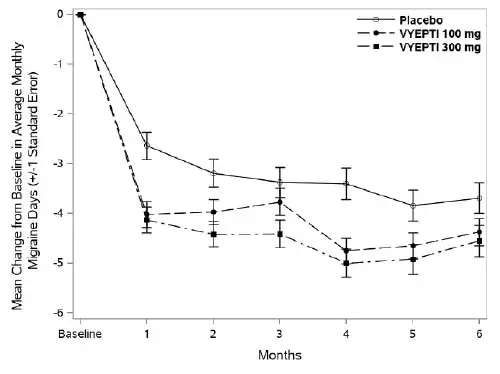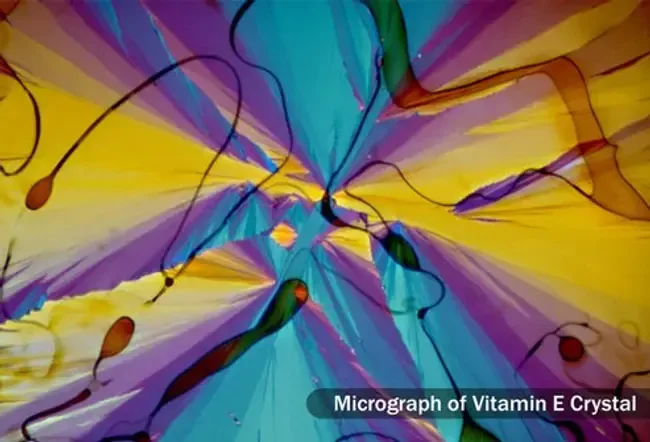Body-Focused Repetitive Behaviors: Picking, Pulling, and Biting Disorders
The Information On The Site Is Not Medical Advice. We Do Not Sell Anything. The Accuracy Of The Translation Is Not Guaranteed. Disclaimer
More Than a Bad Habit

Body-focused repetitive behaviors (BFRBs) are intense urges like biting picking and pulling that can cause damage. As many as 1 in 20 people have a BFRB but they can be dismissed as bad habits. While BFRBs share some symptoms with obsessive-compulsive disorder (OCD) they’re not the same. They’re also different from self-harming rituals like cutting yourself.
Who’s Likely to Have Them?

Experts are still trying to figure this out but they know your genes are involved. If someone in your family has a BFRB you’re more likely to have one too. Other things that might play a role include your personality the amount of stress in your life your childhood and even the age you first started showing signs of a BFRB. More women have them than men.
Dermatillomania

If you can’t help but pick at pimples scabs bumps or even healthy skin you have dermatillomania sometimes called excoriation disorder. Doctors don’t know what causes it but people who have obsessive-compulsive disorder (OCD) are more likely to have it. Wearing bandages on your fingers or keeping your hands busy with a fidget spinner may stop you from picking so much.
Onychophagia

You probably know this BFRB by its common name: nail biting. As many as 30% of people do this -- some aren’t even aware of it. Besides damaging your skin and nails this also can hurt your teeth and lead to infections. Keeping your nails trimmed short can help. You can also use a special nail product that has a bitter taste.
Morsicatio Buccarum

People with this BFRB can’t stop biting the inside of their mouths. Over time this causes sores and swelling. The inner lining of your mouth can also start to feel bumpy which may make you want to chew it more. Since people often do this to self-soothe it can help to find a different action like chewing gum that gives you the same feeling.
Morsicatio Labiorum

This is when you have the urge to chew bite or suck on your inner lip. After a while it can make the skin cells on your lip slough off and create a rough white gray or yellow patch. Wearing a lip bumper a device that keeps your lower teeth away from your lips can help break this cycle. Talk therapy can also help you deal with feelings that may be behind this BFRB.
Morsicatio Linguarum

Some people chew on the sides of their tongues. It’s more common than you’d think and is often caused by stress. Your dentist may suggest that you wear a special mouth guard that covers your teeth and shields your tongue. You can also talk to your doctor about ways to better manage your stress.
Onychotillomania

If you have this BFRB you can’t stop picking or pulling at your fingernails and toenails as well as the skin around them. (You may also chew or bite them.) Over time this leads to hangnails and open sores and you can pass germs from your mouth into your skin. That can lead to infections. Instead you might play with Silly Putty or squeeze a stress ball. Wearing a pair of gloves could help too.
Dermatophagia

This is when you chew on your skin then eat it or the scabs. Tension and worry can be a trigger. Something you feel on your skin like a hangnail can also set you off. Some people find they can get rid of this BFRB in baby steps. For instance choose a small area (like your thumbs) to stop chewing. Work your way up to one set of nails then the other and continue from there.
Rhinotillexomania

If you pick your nose so much that it affects your daily life you may have rhinotillexomania. In some cases people spend hours each day trying to clean out their noses. People who have this BFRB are also more likely to have another one like skin picking or biting their nails. Try to notice each time you have the urge to pick your nose and write down how you feel at the time. This might help you figure out your triggers and what to do about them.
Trichotillomania

Some people yank hair from their heads eyelashes eyebrows or other parts of their bodies. Anxiety or boredom can trigger it. In some cases people don’t know they’re pulling their hair. Trichotillomania often starts between ages 10 and 13 but it can be a problem for life. You can try to replace it with another more healthy habit. For example you might knit crochet or cross-stitch to keep your fingers busy.
Trichophagia

As many as 20% of people who pull their hair also eat it. Some people nibble at the roots while others eat bunches. In very rare cases people eat other people’s hair or hair from animals. If you swallow a lot of hair you can get a hairball in your stomach. If that happens and it’s not taken out it can be life-threatening.
Trichodaganomania

Hair biting is the basis of this BFRB. Since it’s hard to chew on the hair attached to your scalp most people nibble hair on other parts of their body. Like all BFRBs negative feelings can be a root cause. Doing something else with your mouth can help. For example you might chew on gum or a raw piece of spaghetti. You could also suck on a mint or crack open sunflower seeds with your teeth.
Trichotemnomania

In Greek temnein means to cut and trich is hair. If you have this BFRB you have a strong urge to remove hair from your body. This includes more than what’s on your scalp. You may also cut or shave your eyebrows the hair on your arms legs or pubic area. Like hair-pulling trichotemnomania’s an obsessive-compulsive act. Deep down you may believe cutting your hair will get rid of unwanted thoughts.
Treatment Can Help

If you have a BFRB you can try several things to keep your habit from taking over your life. Cognitive behavioral therapy (CBT) may help the most. This type of therapy helps make you aware of your feelings and thoughts and gives you more control over them. Sometimes medicines can help too. Talk with your doctor or therapist about what might work best for you.
Body-Focused Repetitive Behaviors: Picking Pulling and Biting Disorders
Sources: 
IMAGES PROVIDED BY:
- Tetiana Mandziuk / Getty Images
- Ariel Skelley / Getty Images
- Barcroft Media / Contributor / Getty Images
- chumatimepass / blogspot.com
- dermaamin.com
- dermaamin.com
- Dr P. Marazzi / Science Source
- iStock / Getty Images Plus
- Bladestorm / Reddit
- Westend61 / Getty Images
- Dr P. Marazzi / Science Source
- WebMD
- WebMD
- FluxFactory / Getty Images
- Highwaystarz-Photography / Thinkstock
REFERENCES:
- Anxiety.org: 'BFRBs: Compulsive Behaviors That Unintentionally Cause Physical Damage.'
- International OCD Foundation: 'Disorders Related To (and Sometimes Confused With) OCD.'
- American Academy of Dermatology: 'How to Stop Biting Your Nails' 'Dermatologists share tips to stop nail biting.'
- Mental Health America: 'Excoriation Disorder (Skin Picking or Dermatillomania).'
- The TLC Foundation for Body-Focused Repetitive Behaviors: 'Learn About BFRBs' '50 Ways to Stop Pulling Your Hair' 'List of Strategies for Skin Picking' 'Nail Biting (Onychophagia)' 'About Chronic Cheek Biting' 'Other Body-Focused Repetitive Behaviors' 'Expert Consensus Treatment Guidelines: Body-Focused Repetitive Behaviors' 'Help Yourself: A Self-Help Program to Managing Trichotillomania' 'Understanding Body-Focused Repetitive Behaviors.'
- Mayo Clinic: 'Trichotillomania (hair-pulling disorder)' 'Therapy for BFRBs: Cognitive Behavioral Therapy.'
- Comprehensive Psychiatry: 'Clinical Characteristics of Trichotillomania with Trichophagia.'
- Psychiatria Polska: 'Trichotillomania and trichophagica—diagnosis treatment and prevention. The attempt to establish guidelines of treatment in Poland.'
- Canadian BFRB Support Network: 'BFRB Definitions + FAQs.'
- RDH: The National Magazine of Dental Hygiene Professionals: 'Tongue Chewing.'
- The American Journal of Dermatopathology: 'Morsicatio buccarum et labiorium (excessive cheek and lip biting.).'
- Annals of Dermatology: 'Three Cases of Mosicatio Labiorum.'
- The Angle Orthodontist: 'Lower Lip Sucking Habit Treated with a Lip Bumper Appliance.'
- Turkish Journal of Medical Sciences: 'Treatment of Habitual Lip Biting: A Case Report.'
- Indian Journal of Psychiatry: 'Onychotillomania as manifestation for underlying depressive disorder.'
- NHS: 'Skin Picking Disorder.'
- Journal of the American Academy of Dermatology: 'Trichotemnomania: obsessive-compulsive habit of cutting or shaving the hair' 'Trichodaganomania: the compulsive habit of biting one’s own hair.'
- The Journal of Clinical Psychiatry: 'Rhinotellexomania: psychiatric disorder or habit.'
- ActaDV: 'Trichotemnomania: Hair Loss Mediated by a Compulsive Habit Not Admitted by Patients.'
- AnxetyBC: 'Methods for Addressing Body Focused Repetitive Behaviors.'
This tool does not provide medical advice. See additional information: 
THIS TOOL DOES NOT PROVIDE MEDICAL ADVICE. It is intended for general informational purposes only and does not address individual circumstances. It is not a substitute for professional medical advice diagnosis or treatment and should not be relied on to make decisions about your health. Never ignore professional medical advice in seeking treatment because of something you have read on the Site. If you think you may have a medical emergency immediately call your doctor or dial 911.
© 1996-2025 WebMD LLC . All rights reserved.
Source slideshow on WebMD












